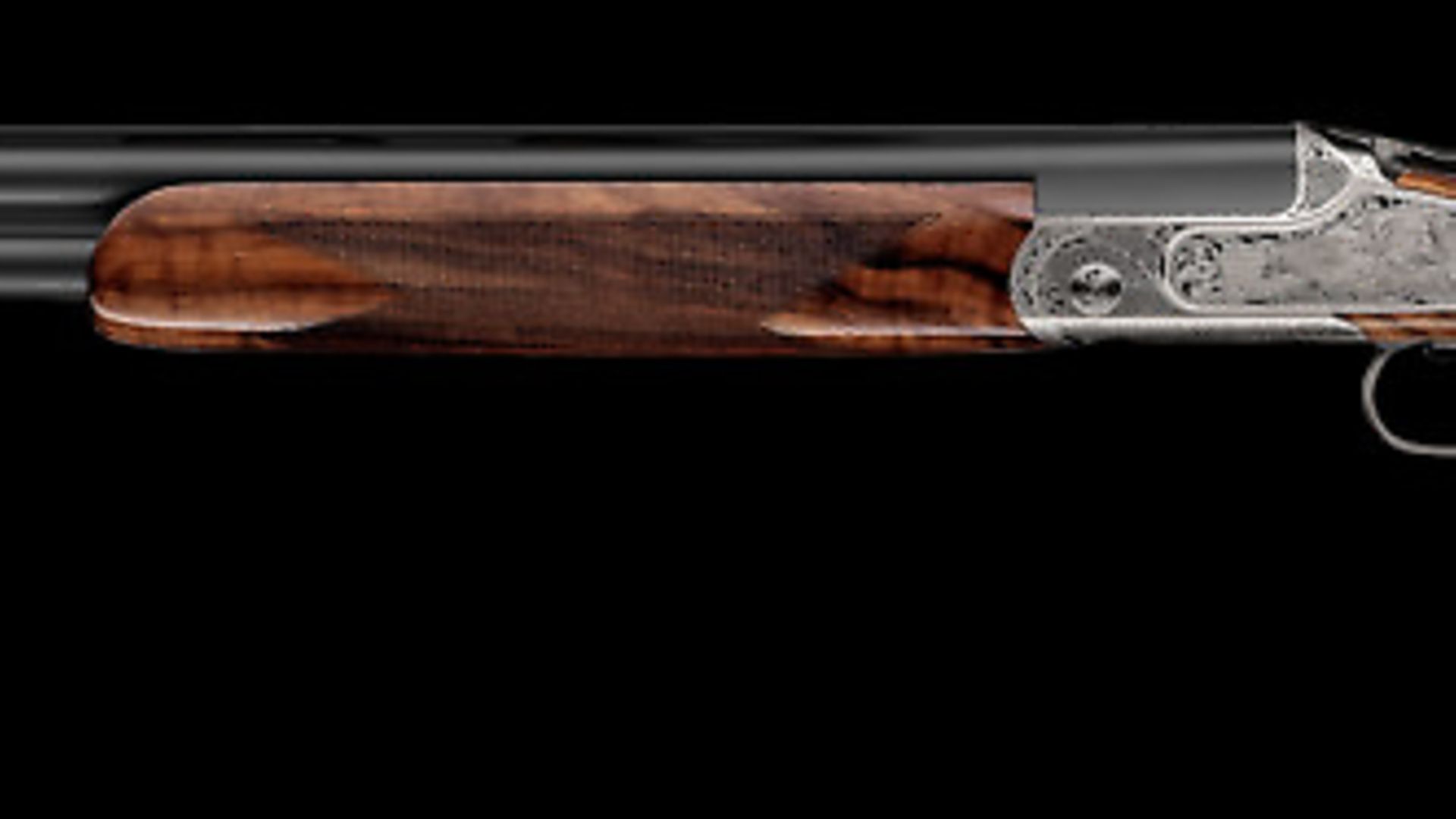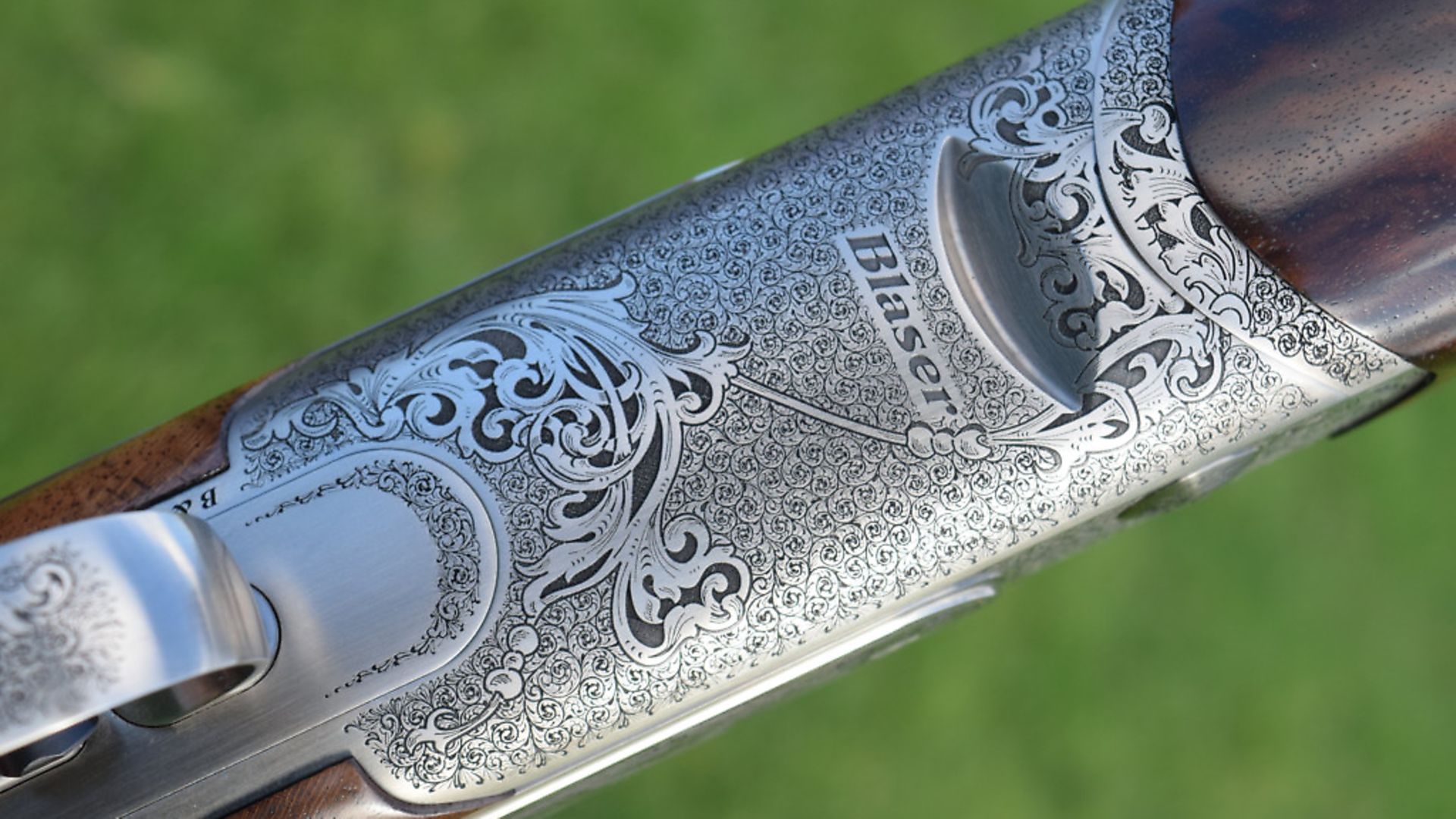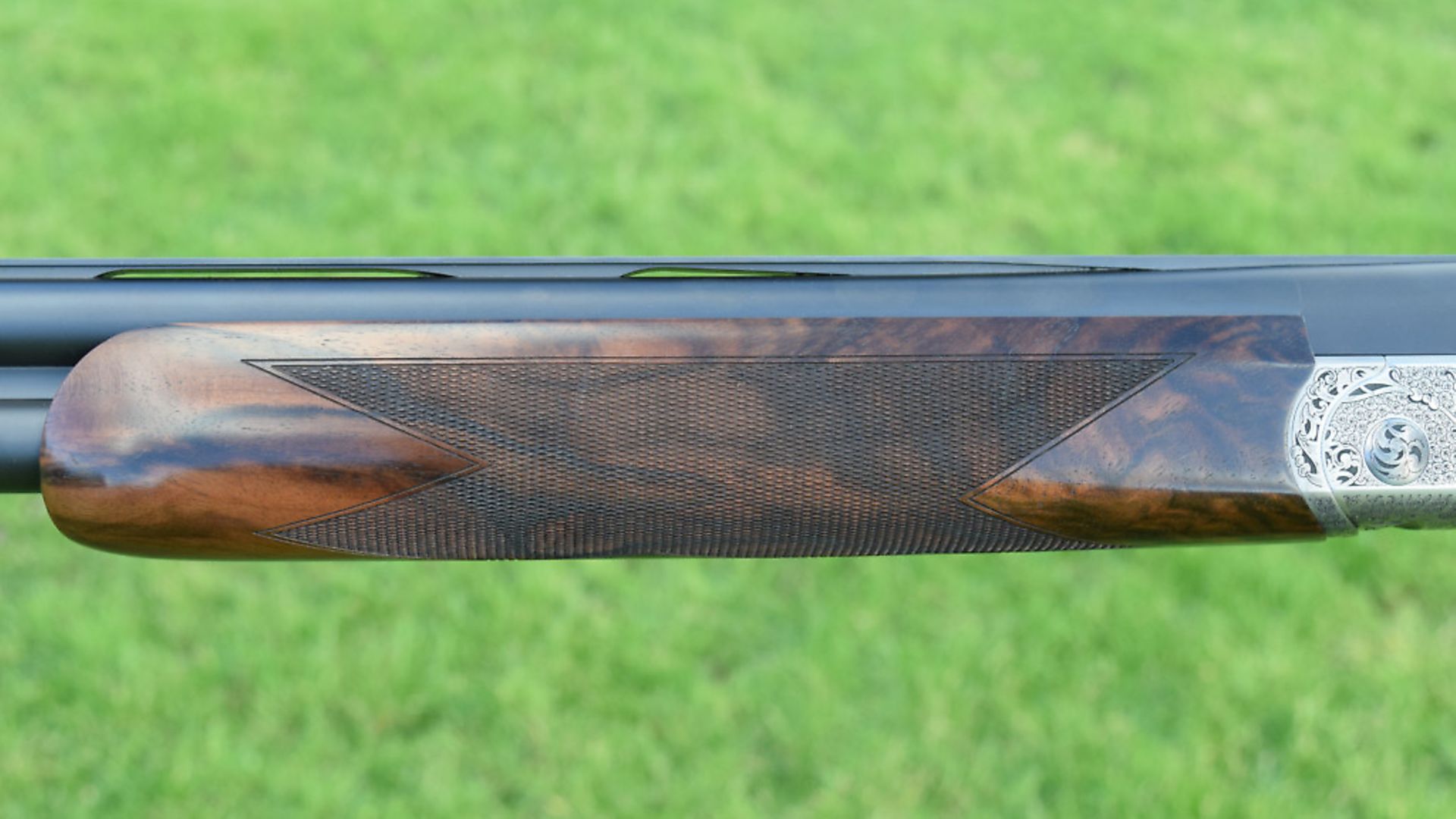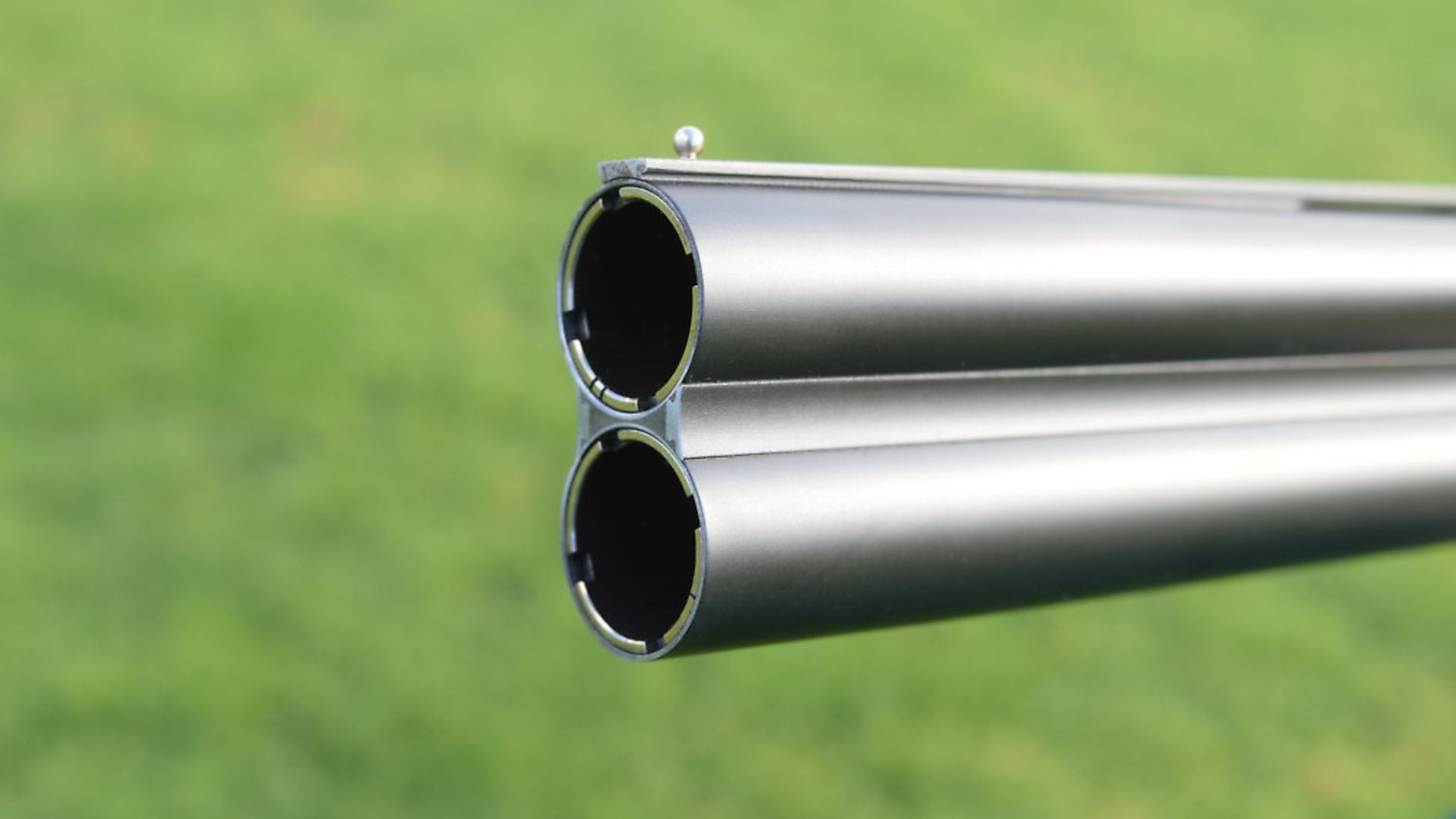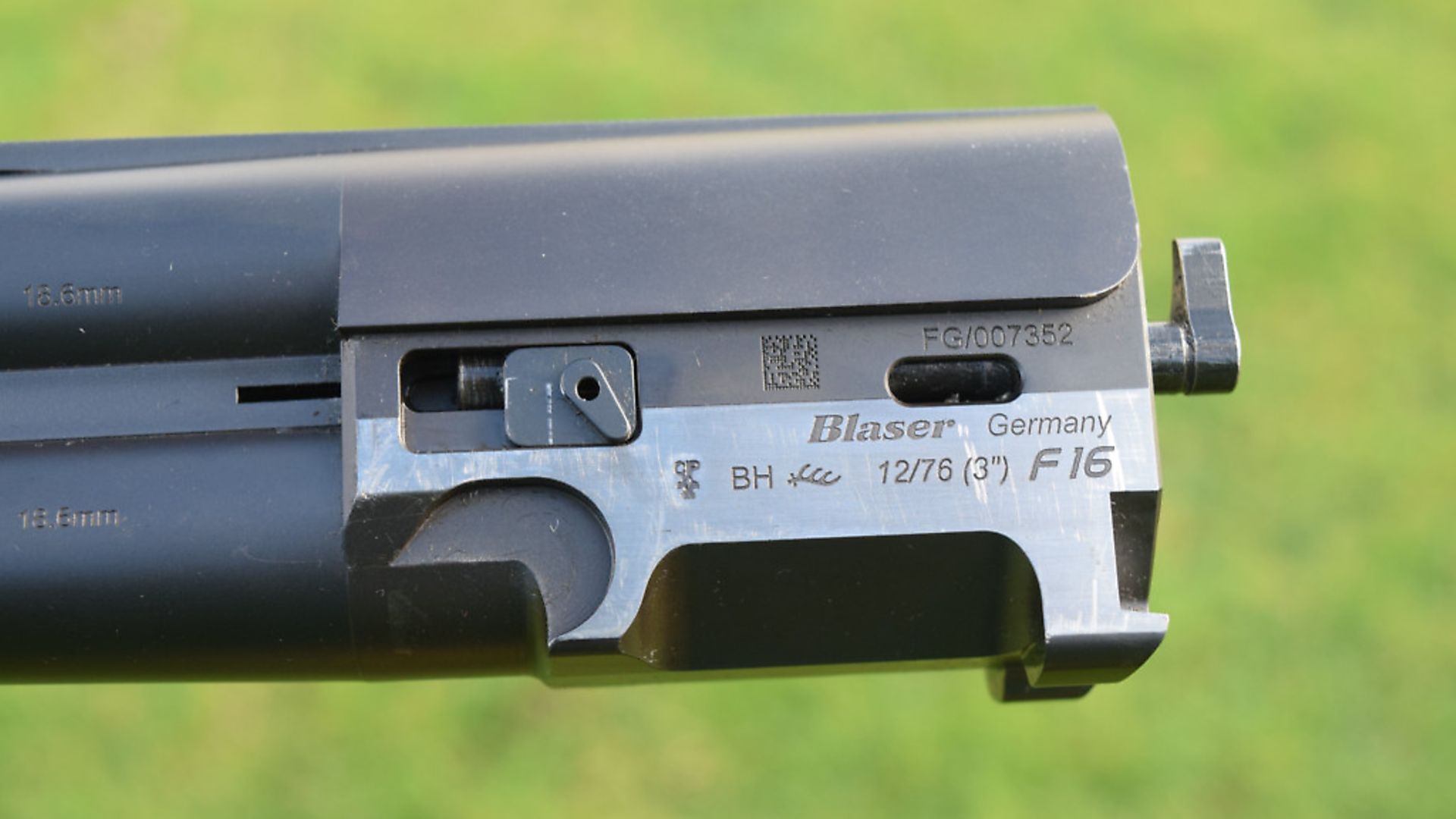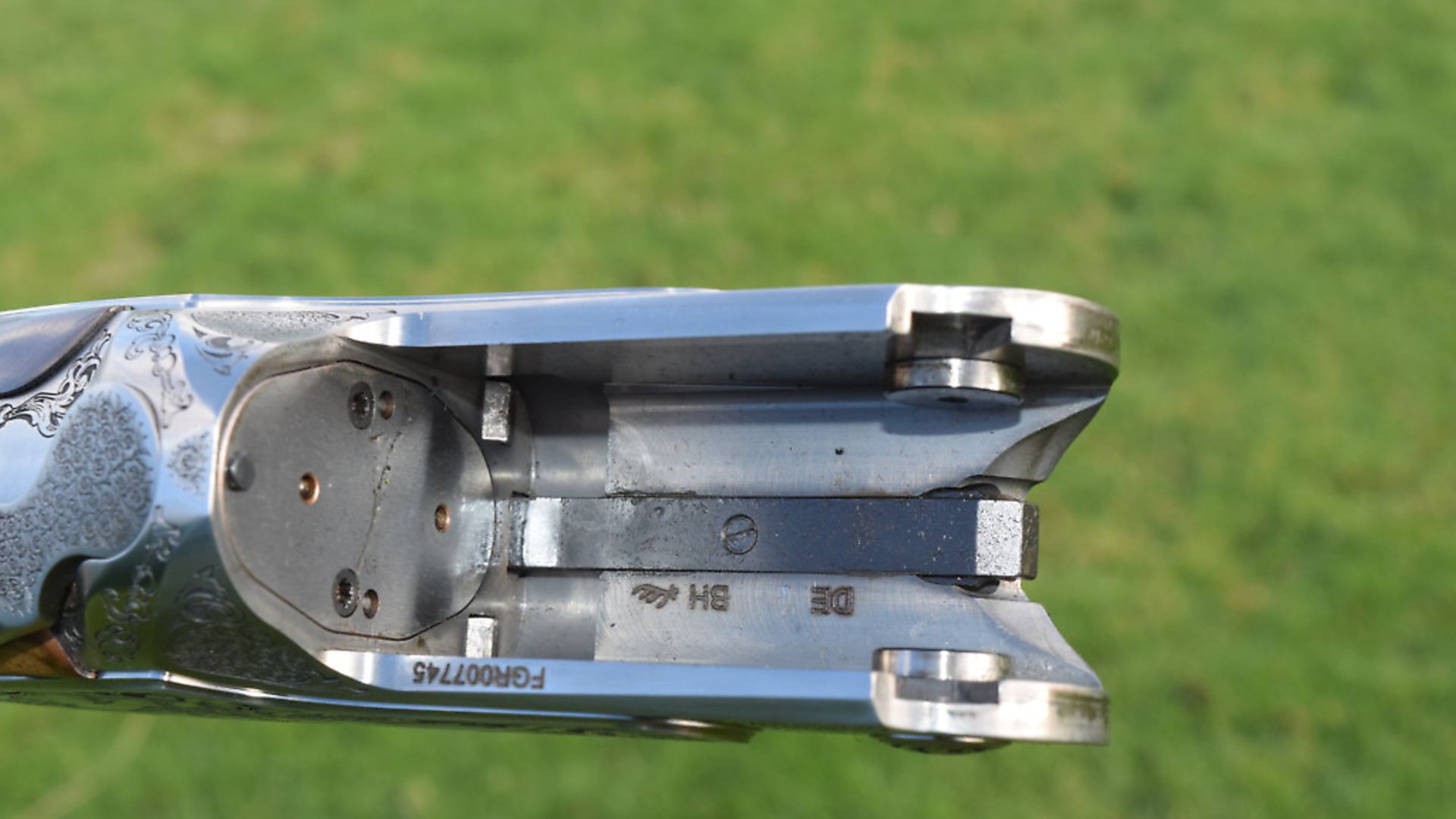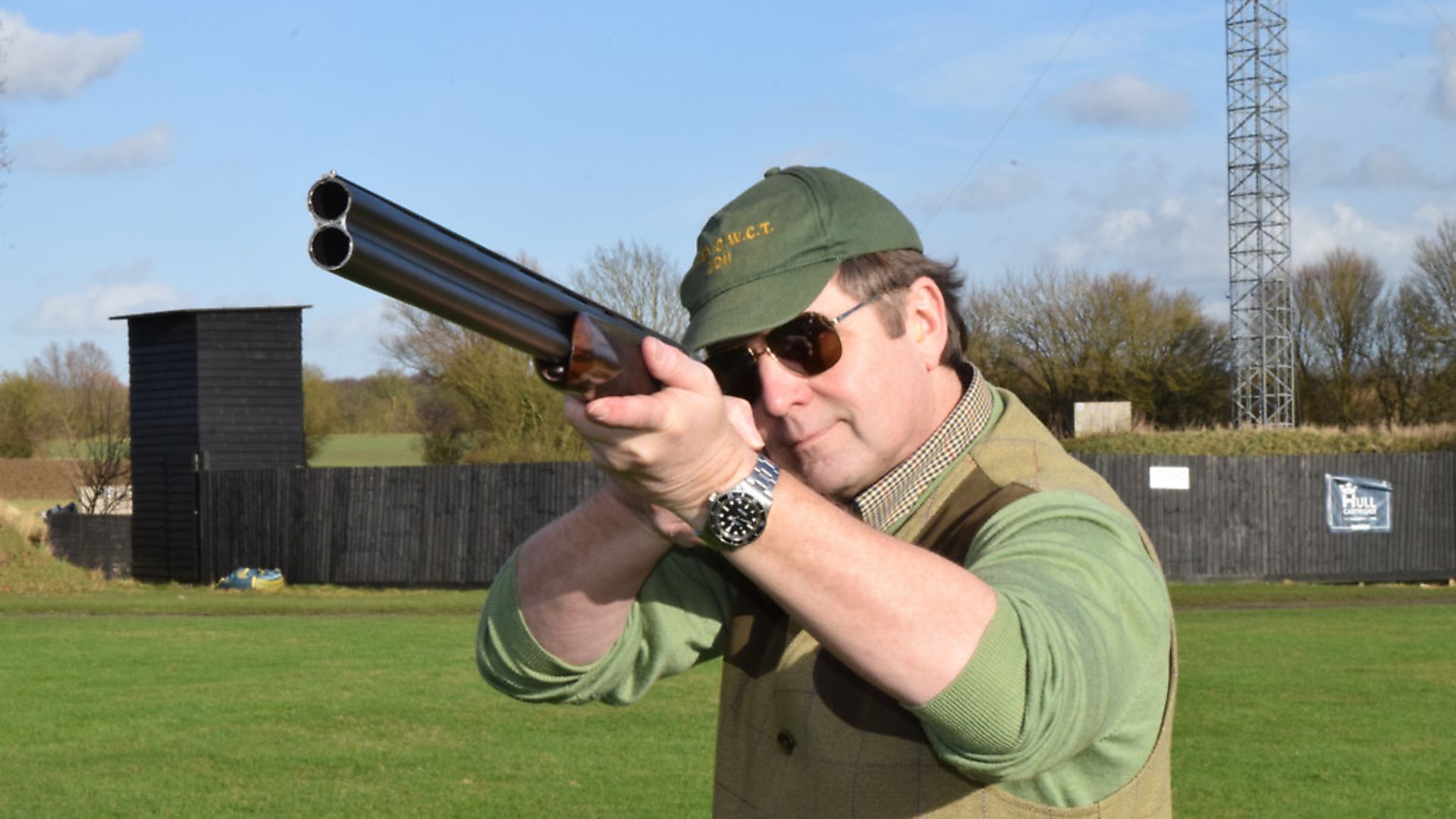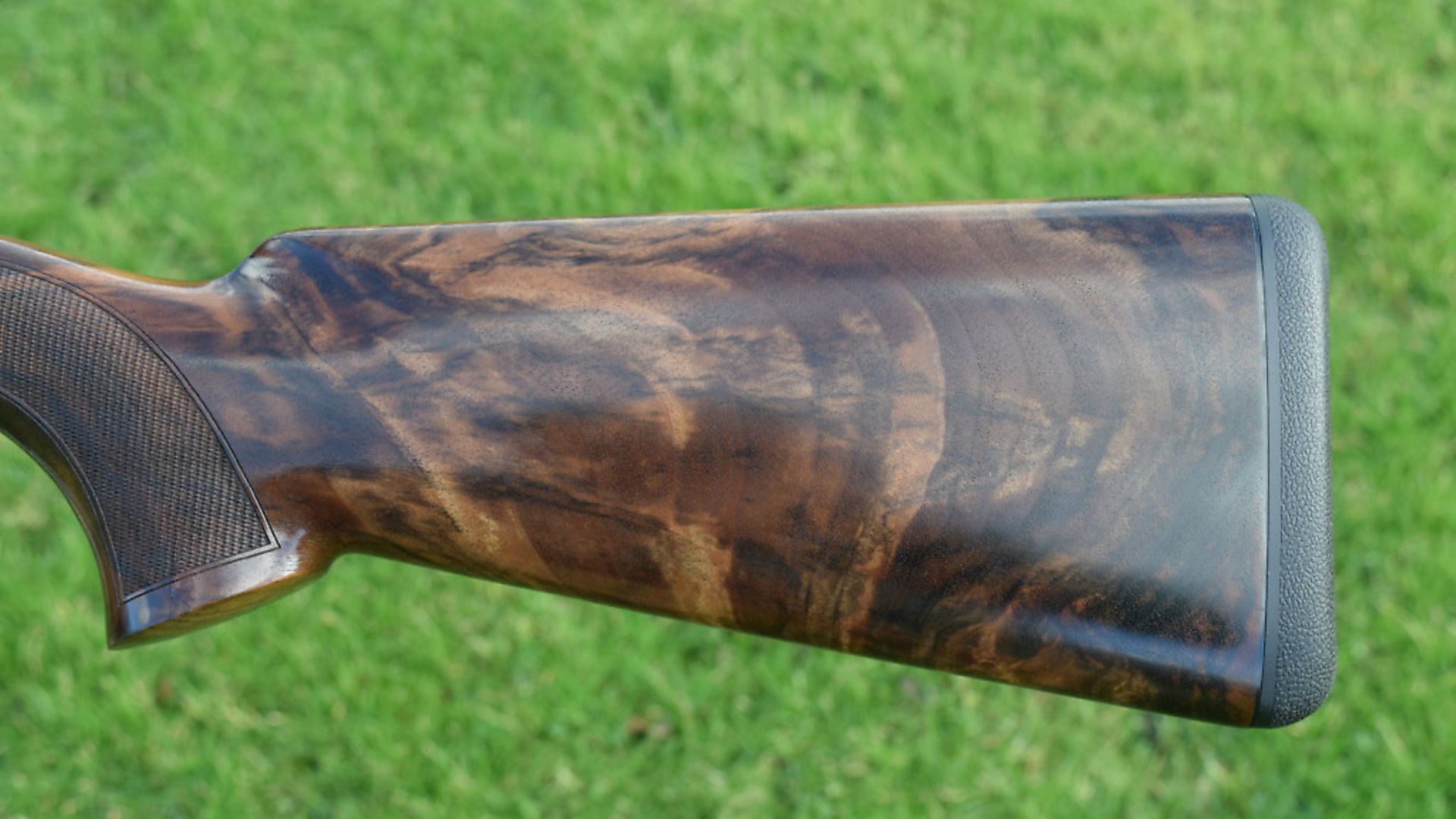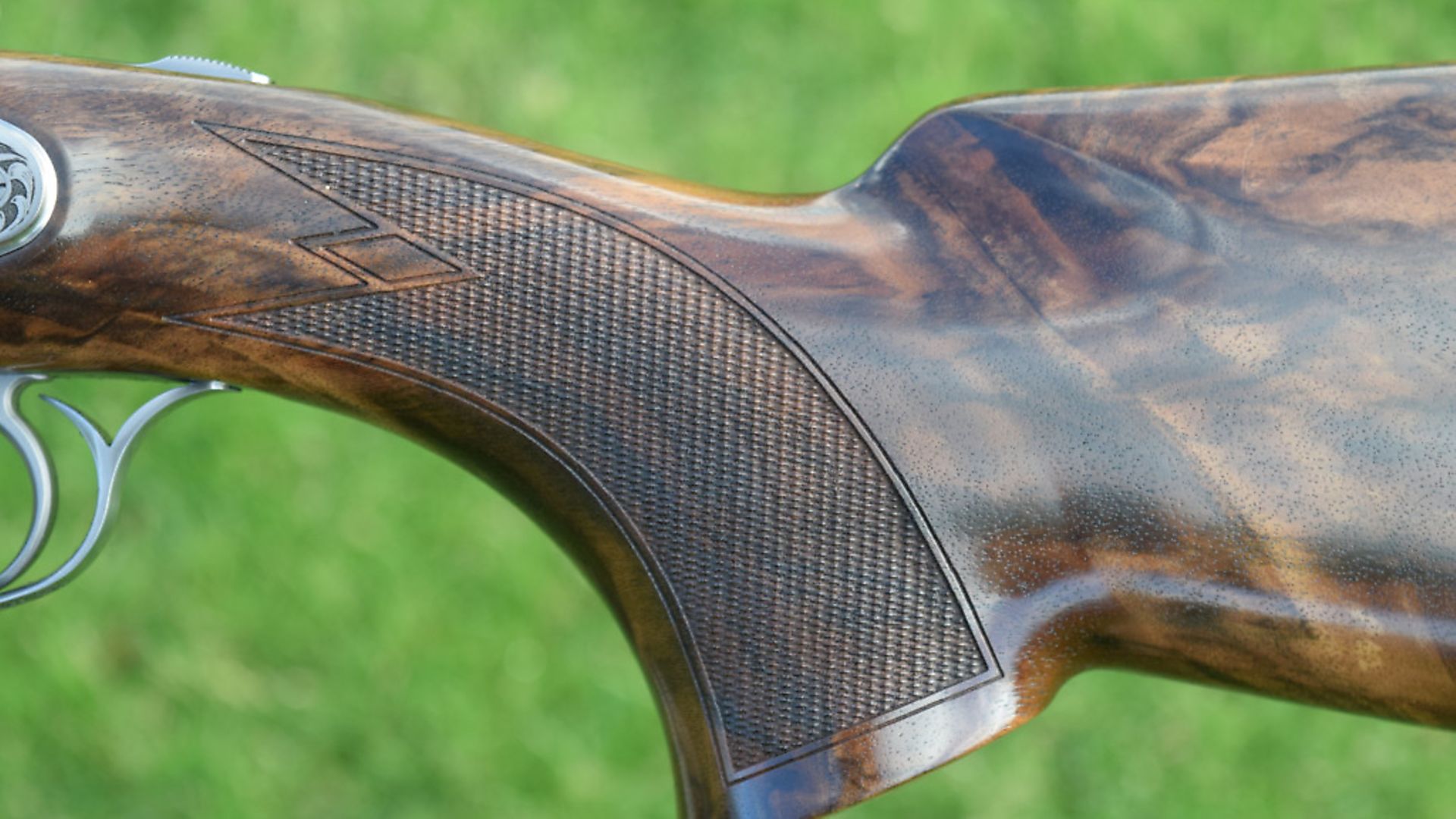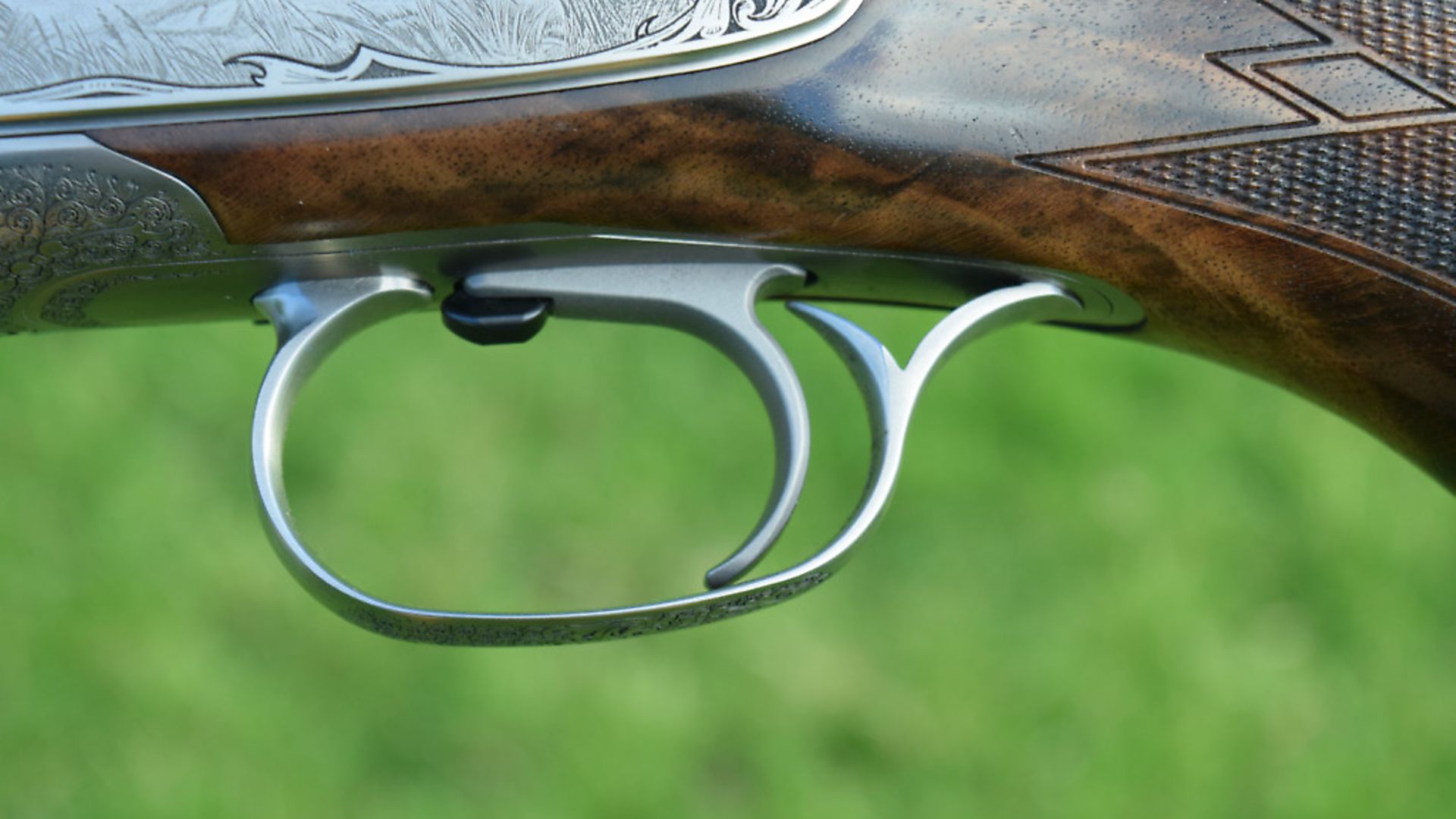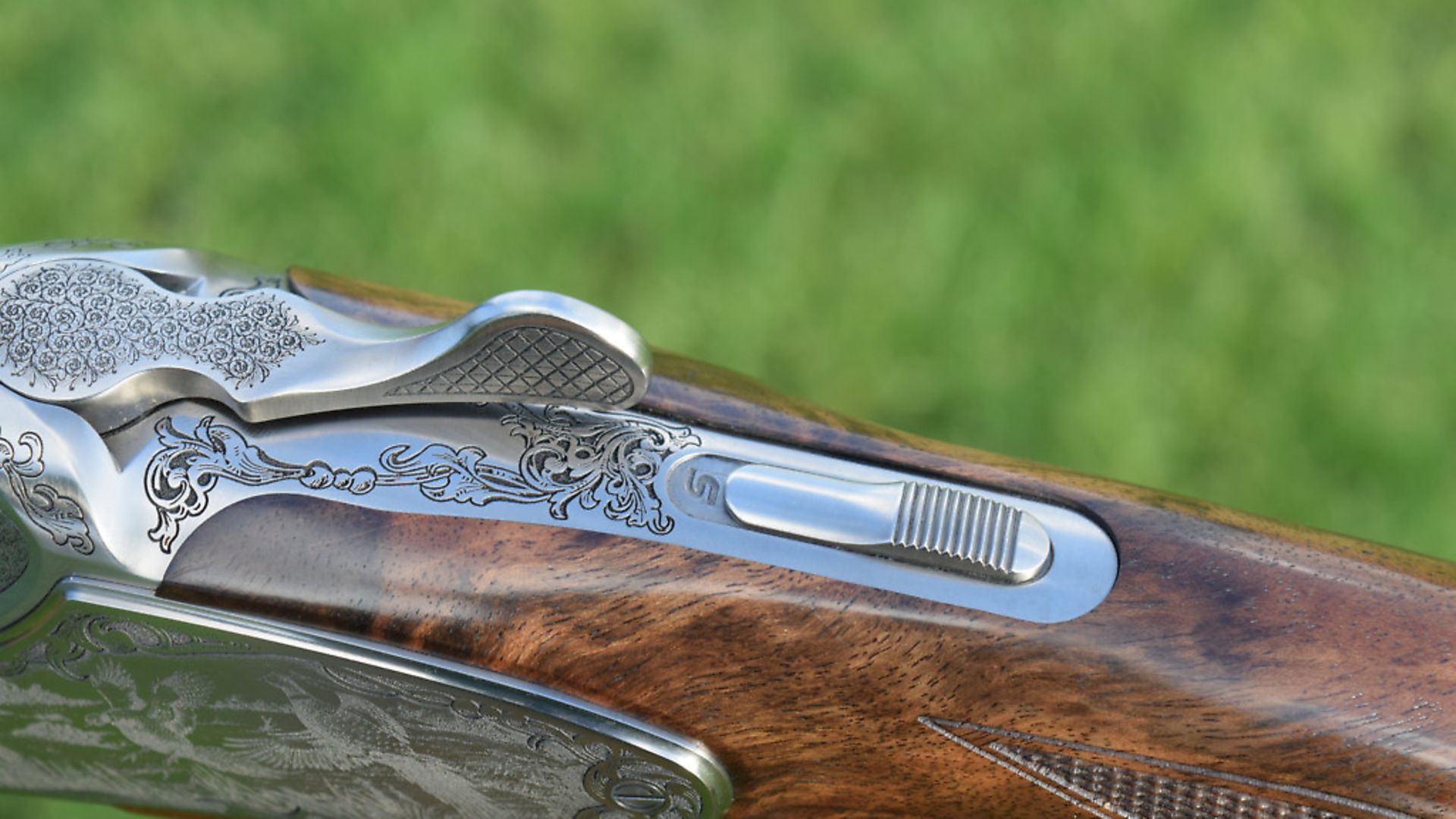Blaser F16 Heritage Game shotgun – test & review

Mike Yardley puts the rather fancy Blaser F16 Heritage Game shotgun to the test and discovers a super smooth shooting gun that looks beautiful too
Tech specs
maker: Blaser
model: F 16 Heritage Game
action: trigger-plate
barrels: 30” (28” option)
chambers: 3” (steel shot proof)
chokes: multi
Weight: 8lbs
RRP.: £6,987 (standard game model without side-plates from £2,783)
We like: The quality of finish; The stock dimensions; The low felt recoil
We don’t like: The tight grip and palm swell
(My thanks to Lyalvale Express for the cartridges used in this test)
IN DEPTH REVIEW
The Blaser F16 caused quite a stir when it was first launched in the UK a year or so back. Available as a sporter or game gun, it was universally well reviewed, as it offered Blaser’s engineering quality at a much more attractive price point than the original, radical F3, which first appeared in 2004.
The F16’s design was very different too – simple, possibly a little severe, but elegant. The price was attractive; it was around the £2,500 mark when introduced (a little more now since the fall in the value of the pound against the euro).
Blaser are now offering us a deluxe side-plated version of the F16 – the Game Heritage. The bottom line here is around £7k, which pitches the gun into similar territory as a Beretta EELL or Browning Heritage. The F16 has its own distinct character, though, and there is a real wow factor when you first see it.
The new gun carries bold laser-engraving on its side-plates. The wood on the test specimen was spectacularly figured too, and all these models will have upgraded wood compared to standard guns without side-plates.
There is also a scroll-only version of the F16 Heritage which will be available soon. My preference is usually for scroll engraving alone on anything other than a Best gun engraved by a master craftsman’s human hands. I am conservative in my taste when it comes to guns! Still, the work here is very fine.
Give it a year or two, and I suspect the difference between mechanically applied engraving and human work will be even more difficult to discern. In the meantime, it is nice to see Blaser developing this technology so well. CNC and lasers have transformed modern mass-market gunmaking.
This F16 comes with 30” monobloc barrels. There is also a 28” option (no 32” in the game version yet, but there is a 32” Sporter available).
Happily, the 30” barrels seemed to suit this gun well. I especially liked the taper rib. The barrels are bored at 18.6mm, which is neither too tight nor too open, and should accommodate the use of fibre-wad cartridges in very cold weather. I have a preference for back-bored barrels but they can create obturation problems with fibre or felt wads under certain conditions.
The barrels are multi-choked, increasing versatility. The chokes are manufactured for Blaser by Briley and five are supplied.
When mounted, my test gun is quite a big beast even with the 30” barrels as fitted. The stock shapes are fulsome. It feels solid and stable, though, and not without some ‘life’ forward either.
There is a rather tightly-radiused large pistol grip with palm swell, and the stock comb is generously proportioned. The stock is very comfortable but, on what is billed as a game gun, one might lose the palm swell and thin and taper the stock comb a bit more, and possibly open the grip radius.
The wood to metal fit is very good, as is the general finish. The oiled stock has a polished sheen. Barrel blacking is satin which is nicely done as one would expect. It has its advantages in a pigeon hide, but doesn’t do it for me as much as a glossy London-style black.
All of which leads us on to consider the stock in a bit more detail. One of the most intriguing features of the F16 is the facility to balance it by means of barrel and stock weights (these are not usually supplied with the game version, though the test gun and other UK market higher combed guns may have stock weights with them).
You can screw on weights to the barrels of the Blaser F16. The stock weights, if present, are metal cylinders threaded onto the stock-bolt in the butt. The fore-end is of a particularly pleasing and ergonomically efficient rounded style, with a semi-concealed Anson-style release button to the front.
TECHNICAL
The new F16 dispensed with the innovative inline hammers (as created by Blaser’s talented Russian prototype engineer, Sergei Popikov) and used a more conventional trigger-plate design with hinged hammers. The works are still powered by helical springs, as is the modern mass-produced norm.
There is a mechanically operated single trigger with a barrel selector forward of the trigger like the F3, which makes a nice alternative to the usual safety-mounted variety.
I found this positive in use, and arguably easier than a top-strap safety-mounted type when fingers are cold. There are no under-lumps so a low action profile is retained, and bolts engage with recesses in the monobloc.
The ejection system is intriguing – the ejector springs are cocked once the gun is fired and opened. There are little pins which protrude from the standing breech; when the gun is fired, these engage with the face of the extractor and push down a steel ball, which arms the ejector mechanism before opening.
Shooting impressions
I have shot a few F16s yet, and this is my favourite so far. I used it on a Skeet range and on Sporting layouts, as is my norm with all guns whether intended for clay busting or the field. I did not really notice the eight pound weight, but I did notice the lack of felt recoil. This is a particularly soft gun to shoot. I also liked the tapered rib, a really excellent design, and the higher than average stock comb. The measurements here are very near the English ideal of 1 ½ and 2”, and I am reminded of my past conversations with Blaser on this topic (I have designed a stock for the firm recently and the original Blaser F3 when launched was influenced by my research in this area). The styling of the Heritage is bold. It would look nice with tight scroll all over too, as noted. The price does not scare and the balancing is interesting and potentially useful. Blaser just keep on making good guns! This model will do well, I suspect, and might be used for clays just as well as game. The engineering and finish impress. Once again, Blaser show what they can do with their very clever machines and innovative thinking.




